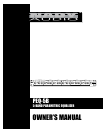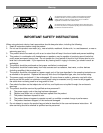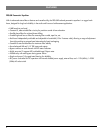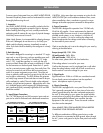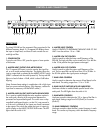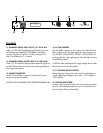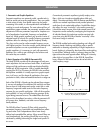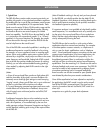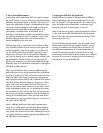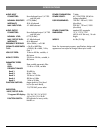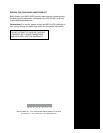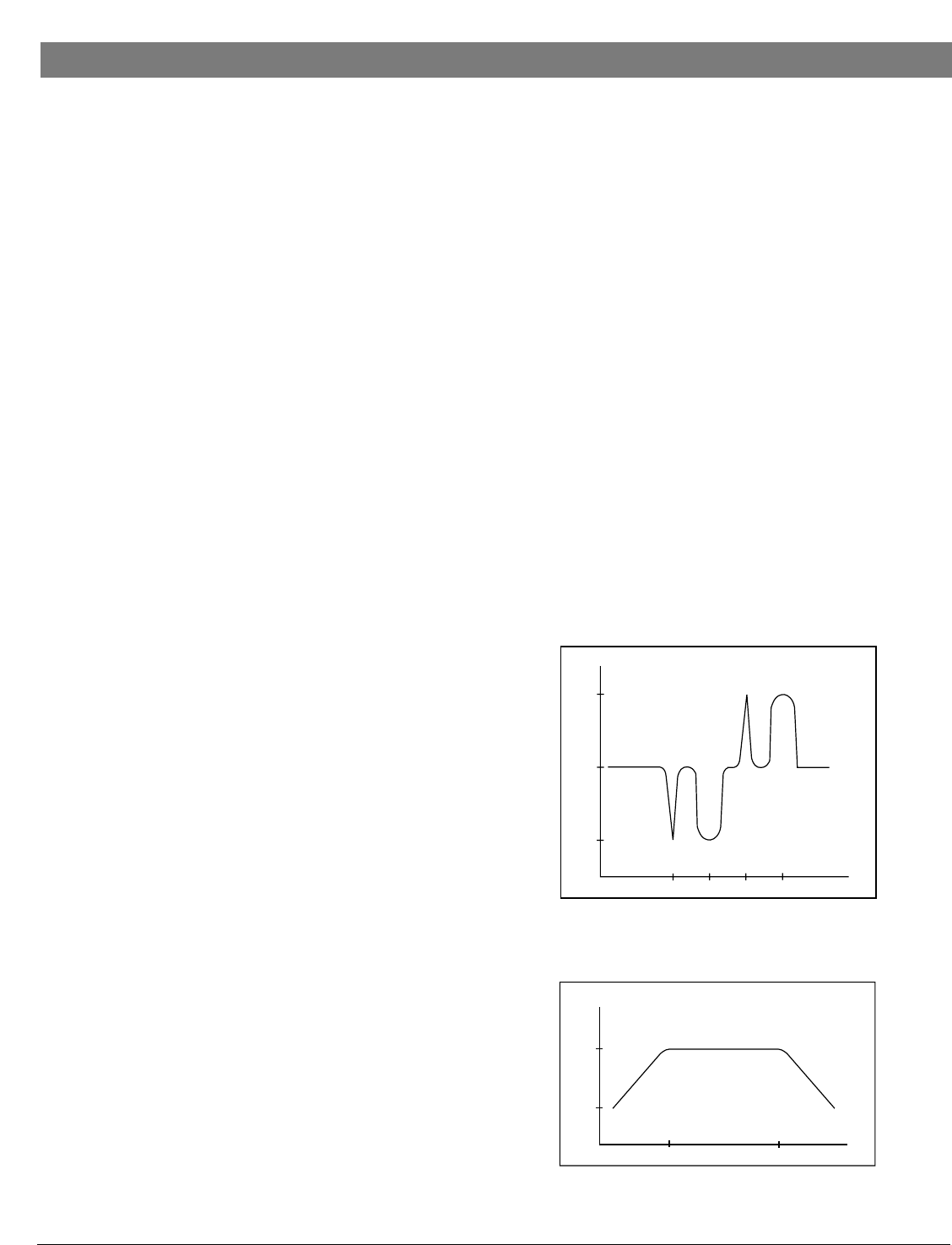
APPLICATIONS
1. Parametric and Graphic Equalizers
Parametric equalizers are extremely useful, versatile tools in
both live sound and recording applications. They can enable
a wide variety of tasks, from gentle contouring and audio
sweetening in the studio, to room equalization and feedback
notching in sound reinforcement. The most advanced form of
equalization system available, the parametric equalizer allows
adjustment of all three parameters required for complete con-
trol of equalization: bandwidth, frequency and amplitude
boost/cut. While graphic equalizers only provide a series of
adjacent bands for control of a specific frequency, parametric
equalizers allow for selecting a specific frequency directly.
Thus, they can be used to realize complex frequency curves
with highest precision. Since the acoustic results obtained with
parametric equalizers are not as predictable as those of
graphic equalizers, it is necessary to work with parametric
equalizers for a while to get a feeling for the functions and
the results they can achieve.
2. Basic Operation of the PEQ-5B Parametric EQ
The Nady PEQ-5B provides all the advantages of both para-
metric equalizers and narrow-band notch filters. Its advanced
design and high performance enable equalization flexibility
limited only by the imagination. With a variable bandwidth
ranging from 0.03 to 2 octaves, the PEQ-5B is the most flexi-
ble equalizer available. It is totally superior to graphic equal-
izers in all ways, and for almost all applications, from post-
production in audio, video and broadcast studios to on stage use.
Each of the PEQ-5B's 5 bands can be adjusted from extreme-
ly narrow to broadband. Its additional low and high-cut filters
have a slope of 6 dB/octave and can be varied over a wide
frequency range and enable control of the entire frequency
response for your specific application. With all this equaliza-
tion available, it is easy to modify the entire spectrum of the
signal being processed at once. The added filters allow both
high and low broadband corrections, while the parametric fil-
ters process hum, feedback, and other narrow frequency
band problems.
The PEQ-5B utilizes Constant -Q filters which prevent the
parameters frequency, bandwidth and amplitude from affect-
ing each other. Such independence allows more clearly
defined and repeatable filter settings. When several filters are
used simultaneously, the resulting overall filter curve can be
calculated by adding/subtracting the single band-specific fil-
ter curves.
TYPICAL APPLICATIONS
OPERATION
8
Conventional parametric equalizers typically employ series
filters, which can introduce noticeable phase shifts and
delays. The advanced-design PEQ-5B features parallel filters,
which are a marked improvement and provide optimized
audio free of such undesirable artifacts. Parallel filter design
thus allows for more "musicality" in the audio processing.
It should be noted, however, that while extreme boost/cut of
frequencies can be realized by overlapping the frequencies
of individual bands, this technique must be exercised with
care when using the PEQ-5B so that the "musicality" of the
final sound image is retained.
The PEQ-5B enables both notching/peaking and rolling-off
frequency bands. Notching and peaking refer to specific
attenuation or boosting respectively of single frequencies or
bands. Peaking is achieved by band-pass filters and notching
by notch filters. Although similar in concept, these two filter
types achieve the exact opposite effect. Rolling off is done by
either high or low pass filters. In the PEQ-5B, these filters
have a slope of 6 dB/octave and can be varied within a
wide frequency range.
0
+15 dBu
amplitude
-15 dBu
frequency
f1
f2
f3
f4
BW=.03 BW=2
BW=.03 BW=2
Fig. 1: Narrow (BW=.03) and Wide (BW=2)
notch (f1, f2) and peak (f3, f4) filters
0 dBu
amplitude
-15 dBu
frequency
f
f
Fig. 2: Roll-off function
l o w
h i g h
Fig. 1: Narrow (BW=.03) and Wide (BW=2)
notch (f1, f2) and peak (f3, f4) filters
Fig. 2: Roll-off function



